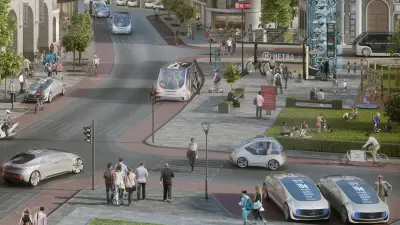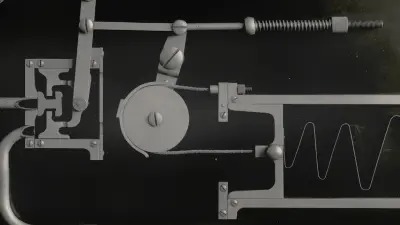With “EVA” to your destination
First navigation system with route guidance

A navigator who knows the local area — always on board
“0 - 0 - 7 - 0 - 8 - 9 – please confirm the starting address!” said the tinny voice from the loudspeaker of the operating station in front of the dashboard. It was a man’s voice, in fact, as it takes less technical effort to digitize than a woman’s, which simply takes up more storage capacity.
The numerical code stood for an address in Hildesheim — the entire city map had been converted into this format for entering starting points and destinations so as to enable EVA, an electronic pilot for drivers developed by Bosch, to take over navigation and tell the driver what route to take using voice output.
Finding your way around in unfamiliar surroundings has long been a frequent problem for motorists. Driving at random without a map or with only an inadequate map has often led to dangerous situations. Telecommunications engineer Otmar Pilsak took on the problem, and right from the start — despite the skeptics — he was dedicated to finding a solution that would make it faster, safer, and more cost-effective for people to get to where they needed to go.
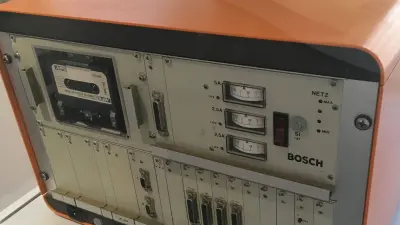
Inventing a navigation system
The prototype driver navigation system was unveiled in Hildesheim on June 21, 1983, and it proved groundbreaking: EVA was the first ever experimental autonomous navigation system. It had a digital map with destinations translated into a number code. Once the start and destination coordinates had been entered, EVA autonomously calculated the best route. Wheel sensors recorded the routes taken and any changes in direction, and compared the vehicle’s movements with the selected route. This made it possible to carry out updates — if the driver accidentally took a wrong turn, for instance — and get the driver to their destination reliably.
The key was that the driver was guided along the roads not only by a visual display but primarily by spoken instructions. This meant drivers could keep their eyes on the road so that the journey was not only more direct, but also significantly safer.
The safe way from A to B
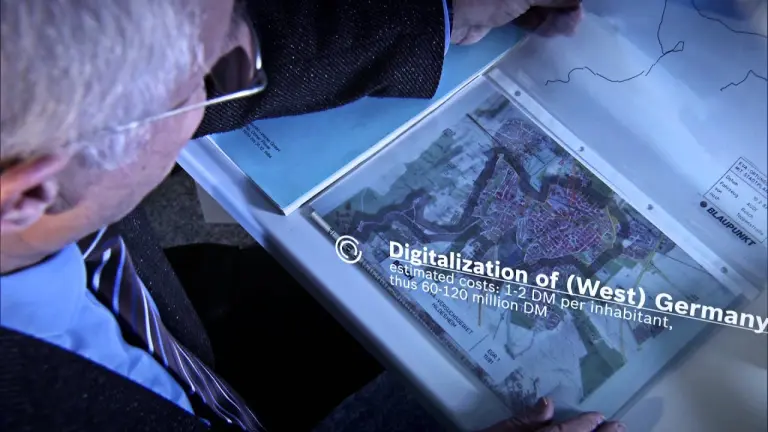
Loading the video requires your consent. If you agree by clicking on the Play icon, the video will load and data will be transmitted to Google as well as information will be accessed and stored by Google on your device. Google may be able to link these data or information with existing data.
Inventor Otmar Pilsak and the vehicle navigation system.
The system was not ready for series production at that time, as it would have been necessary to create digital data for large areas, which would have been too expensive. Also, high-volume, high-performance storage media were not available until later.
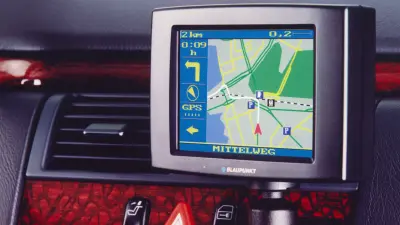
New technical possibilities lead to success
The fundamental principle of EVA is the basis for all navigation systems used today. The development still had to overcome a number of obstacles, but thanks to the new compact disc (CD) storage medium, which was able to store the quantity of data needed for all the roads in Germany, and to the satellite-assisted positioning system GPS introduced by the mid-1990s, Bosch was able to introduce its TravelPilot in 1995. As a result, drivers no longer needed to keep a traditional road atlas in their cars. The integrated voice output function meant that it was not necessary for drivers to glance at the display. They could keep their eyes firmly fixed on the road ahead.
Integrating navigation, entertainment, and driver assistance systems has played a key role on the path to automated and networked mobility.
Author: Bettina Simon

